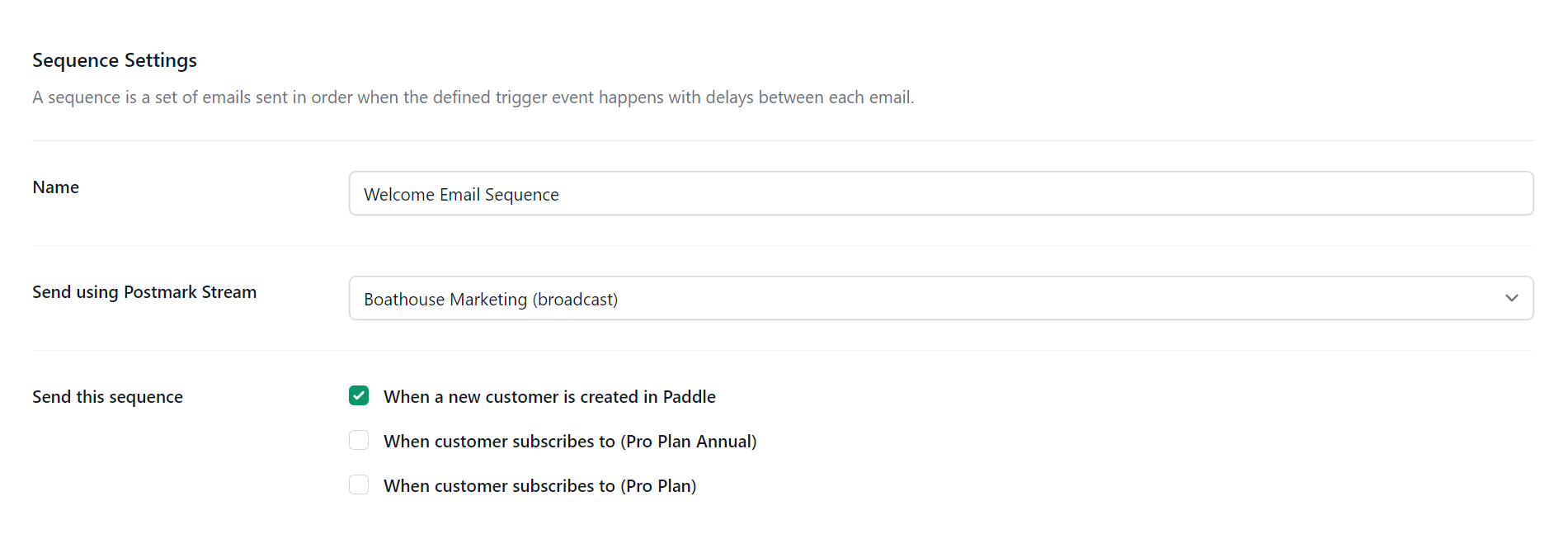Basics
Email Drip Campaigns
It's good practice to give your users information just at the right time. New customers might want to have an overview of the basic features. Customers who have just upgraded might want to know what additional benefits they know have.
But you also don't want to overwhelm them with one large email. It's better to send them an email every couple of days just to give them a little nugget of knowledge and an extra push to have a look at your product again.
Pro Feature
If you want to let customers send email drip campaigns you have to upgrade to our pro plan.
Adding a new email sequence (drip campaign)
On the Emails page (after you've connected Postmark) scroll down to the "Email Sequences and Drip Campaigns" where you can create a new email sequence.

Email sequence basic configuration
The two basic settings for an email sequence are the stream in Postmark to use for sending. While other emails from Boathouse are sent using the transactional channel, these informational email sequences are better suited for the broadcast stream used for marketing emails. This will add an automatic unsubscribe link to your emails so users can opt-out.
Next you specify when the email sequence should be triggered. Currently Boathouse supports starting a sequence when a customer is created in Paddle - for example if you create the customer (or call the Boathouse API) when a new account is created. Or alternatively you can send a sequence whenever a user subscribes to one of your plans.

Define the order and timing of emails in a sequence
Create your email templates in Postmark and then select the order in which they should be sent. You can specify a waiting time in between up to 90 days.

Note: You can change the sequence of emails at any time, but a single customer will only every get the same sequence email once in their lifetime. If you delete the sequence and re-create it using the same templates, then the customer might receive templates more than once.
Template token replacements
You can use any of the base tokens used in our default email templates in your own templates and layouts.
